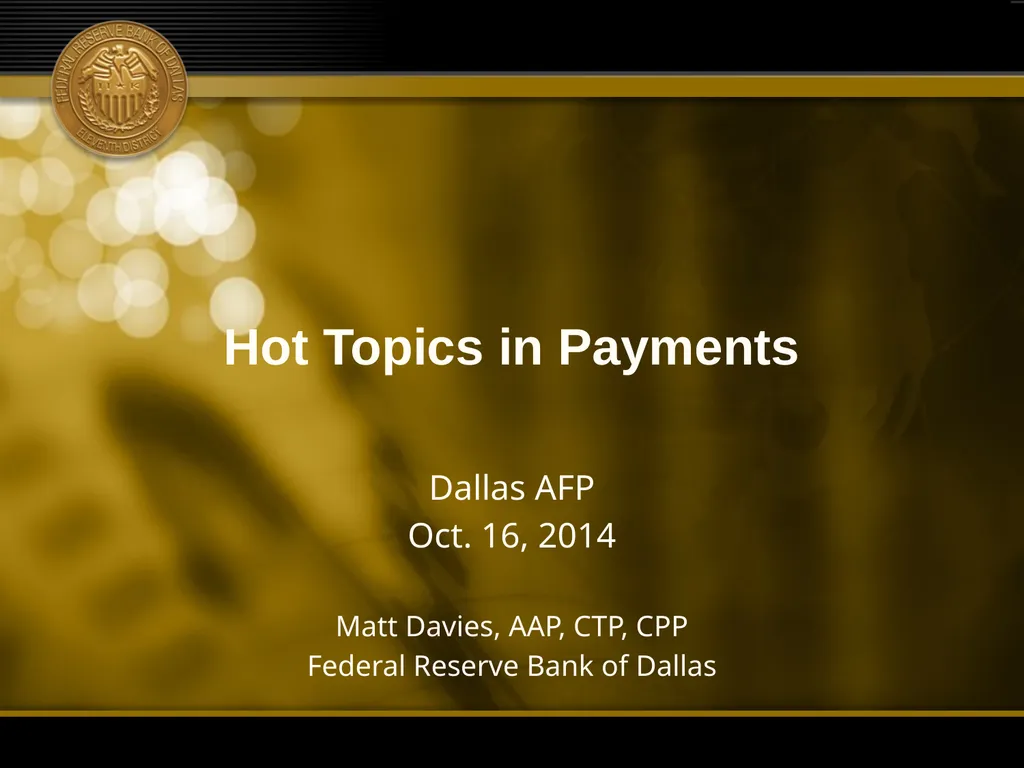
Author : test | Published Date : 2025-05-17
Description: Hot Topics in Payments Dallas AFP Oct. 16, 2014 Matt Davies, AAP, CTP, CPP Federal Reserve Bank of Dallas 1 EMV EMV Europay, MasterCard, and Visa 1994: Founded the global standard for credit and debit payments based on chip cardDownload Presentation The PPT/PDF document "" is the property of its rightful owner. Permission is granted to download and print the materials on this website for personal, non-commercial use only, and to display it on your personal computer provided you do not modify the materials and that you retain all copyright notices contained in the materials. By downloading content from our website, you accept the terms of this agreement.
Here is the link to download the presentation.
"Hot Topics in Payments Dallas AFP Oct. 16, 2014"The content belongs to its owner. You may download and print it for personal use, without modification, and keep all copyright notices. By downloading, you agree to these terms.













